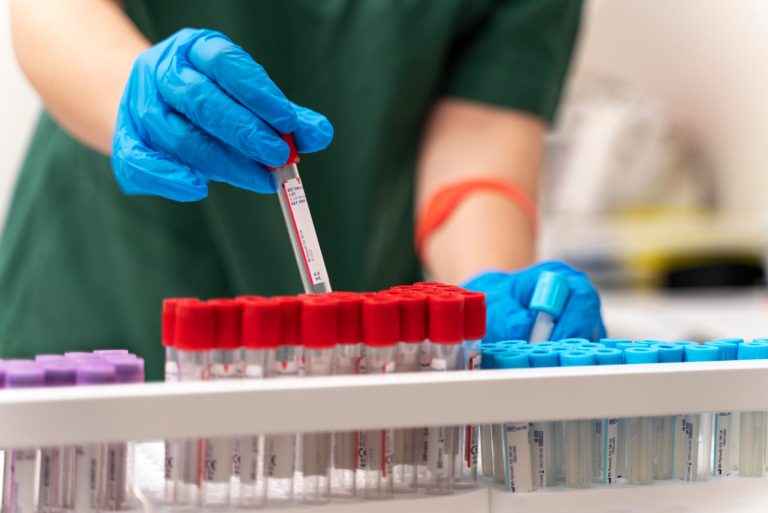
The Marie-Curie project of the postdoctoral fellow Nicolás Moreno, has completed one year after its launch
Design of a Virtual Blood Rheometer for Thrombotic Process Characterization, ViBRheo, aims to construct a computational framework able to detect alterations in blood rheology during clot formations. The goal of Nicolás Moreno, CFD Modelling and Simulation postdoctoral fellow’s ViBRheo is to construct a computational rheometer to characterize viscoelastic alterations of blood associated with coagulopathies and to apply it to clinically relevant physiological flow conditions. ViBRheo will provide information about how chemical, geometrical, and transport features may affect the blood coagulation cascade in patients with COVID-19 and other diseases. As an additional outcome, ViBRheo will potentially lead to the definition of mechanistic biomarkers for early detection and easier monitoring of acute coagulopathy on COVID-19 patients.
“After one year into the fellowship I have developed a computational framework for multiscale modelling of blood using a particle-based discretization”, explains Nicolás Moreno. This framework is the foundation to construct the virtual rheometer for blood characterization. In particular, the multiscale scheme is able to incorporate the hydrodynamics, mass transport, and reactions characteristic in blood coagulation processes. “Additionally, to gain insights into the characteristic hydrodynamic features of SARS-CoV-2, I have built mesoscale models of enveloped viruses.”
ViBRheo counts on the collaboration of Dr. Gontzal Tamayo at Cruces University Hospital, Dr. Dmitry Fedosov at Forschungszentrum Jülich, Prof. Jesus Ruiz Cabello at CICbiomaGUNE, Prof. Karl Hawkins and Dan Curtis at Swansea University. These collaborations provide ViBRheo with clinical data on COVID-19 patients, as well as, experimental and theoretical hemorheological results.
Nicolás Moreno has disseminated his project’s results and the research steps in many different activities and events. He has disseminated them to the general and scientific public. In the academic context, he attended four international conferences in computational modelling and rheology and additionally, in a CECAM workshop recently organized by BCAM. “For non-academic audiences I had the opportunity to participate in BBK Zientzia Irekia, PI Day (organized by Naukas and BCAM), and Zientzia Astea (for high school students) organized by Universidad del País Vasco”, says the postdoctoral fellow.
His research has impact in the development of novel analytic techniques, identification of biomarkers, and overall, the construction of virtual devices suitable to investigate SARS-CoV-2-related coagulopathies. “Since the applicability of the computational framework is expected to extend beyond blood rheology problems (i.e., complex fluid flows), this research can be used to solve other biological advection-diffusion-reaction related problems” adds Nicolás Moreno. Among the 2030 UN Sustainable Development Goals, ViBRheo strongly aligns with the need of Ensuring Good Health and well-Being. Addressing the need for improved diagnosis in COVID-19-related coagulopathies and strengthening the pandemic preparedness for the future.
The Marie Skłodowska -Curie Fellowships are very competitive fellowships and Moreno explains, “if I had to transmit a message to all the fellows who want to apply for the Marie-Curie Fellowships, I will suggest starting earlier your application, be consistent working at least two months before the deadline. Try to get comments and feedback early on your proposal, from supervisors and colleagues. They can help you to find logical gaps and improve the clarity of your document. On a more practical aspect, I suggest paying attention to each of the evaluation criteria and craft your proposal in a way that each of these aspects are explicitly tackled. When writing it remember that the evaluators will need to read many of these proposals, so try to facilitate their work being clear and direct. If you think a diagram will make it easier to express an idea than writing a plain paragraph, go for it.”
About Nicolás Moreno
He is currently a postdoctoral fellow at BCAM, and his research focuses on the flow simulation of colloids of different shapes in micro- and nanochannels. He uses different mesoscale methods such as smoothed dissipative particle dynamics, SDPD. He is also investigating the multiscale modeling of cellular flows, where the advection-diffusion-reaction process take place. He has worked previously as postdoctoral fellow at the Okinawa Institute of Science and Technology in the Mathematics, Mechanics, and Materials group. He investigated the hierarchical assembly of triblock copolymers into patchy nanoparticles and studied the flow behavior of simple and Möbius ring-like objects (https://vimeo.com/307164022).
He obtained my Ph.D. from King Abdullah University of Science and Technology (KAUST) in Environmental Science and Engineering investigating the formation of isoporous membranes. He studied theoretical and computationally the self-assembly of diblock copolymers in solution. He received my bachelor’s and master’s degree in chemical engineering from National University of Colombia modeling the aggregation of glycoproteins mucins. His research has been focused on the modeling of soft matter (biological and synthetic polymers), mainly at mesoscale with DPD and continuum with finite elements. He has studied the interplay between kinetics and thermodynamics in the assembly of soft materials.
